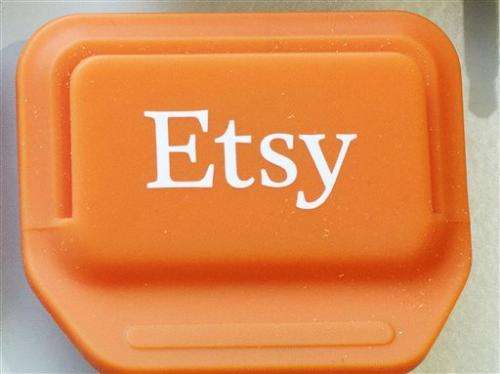Can Etsy keep its folksy brand and make shareholders money?

If craft seller Etsy goes public later this year it will be a test of how well the company can balance an explicit social mission with shareholder expectations for making money.
Founded in 2005, Brooklyn-based Etsy sells everything from a $110,000 antique desk from the 1800s to a $20 handmade antler pendant, and everything in between. In 10 years it's grown from a scrappy startup offering craftspeople a way to sell necklaces and needlepoint online to a marketplace of 54 million members that generated $1.93 billion in sales in 2014. And on Wednesday, Etsy filed for an initial public offering of stock valued at up to $100 million.
The company is more than a folksy, funky brand. It's a B Corporation, which is a for-profit company with a stated social mission certified by a nonprofit organization called B Lab. In its prospectus filed with the SEC, Etsy says its mission is to build a "human, authentic and community-centric global and local marketplace," and cites any loss of its B Corp status as a risk factor to its brand.
There are only about 1,000 such B-Corporations worldwide, including Warby Parker, Patagonia and Ben & Jerry's. But none of them are public companies on their own (Ben & Jerry's is owned by Unilever). If Etsy does go public, it will be the first test of how well certified B Corps can work on Wall Street.
Analysts agree it makes sense for Etsy's growth to go public or seek a buyer, but some say it is difficult for companies to maintain their entrepreneurial or social spirit in the face of Wall Street pressure for financial returns.
"It's going to be a tall order for a management team in the future to be true to its core company values while also delivering shareholder value," said Forrester analyst Sucharita Mulpuru on Thursday. "When companies go public they're held accountable for quarterly goals that shareholders want and it's very, very difficult to stay true to core values." An Etsy spokeswoman declined to comment citing the company's quiet period ahead of the IPO.
But the cash infusion that an IPO brings could juice Etsy's growth. And some Etsy sellers welcome the added awareness an IPO would bring.
"I am excited about the additional attention the site will be receiving," said Michael Webb, 41, a Colorado artist who sells his art through Etsy and other sites and galleries.
Others are playing wait-and-see.
Holly Marshmueller, 32, has sold her line of new mom and baby products, like handmade changing pads and car seat covers, on Etsy since 2011. She said she understands that an IPO will help Etsy grow, but expects it will bring some changes to the site. When she heard about the expected IPO, she signed up for Shopify to host a shopping cart on her own site so she can sell her goods outside of Etsy.
"I was a little nervous and I wanted to protect my brand," said the Portland, Oregon, resident.
But she added that she has no plans to close her Etsy shop.
"I'm positively curious about how things are going to go," she said.
Etsy Inc. plans to list its shares on Nasdaq under the ticker symbol "ETSY."
© 2015 The Associated Press. All rights reserved.


















